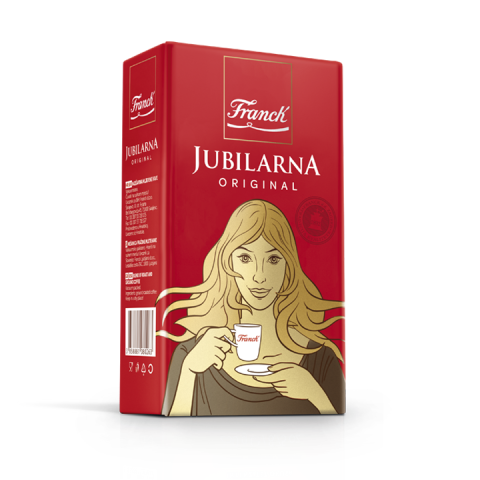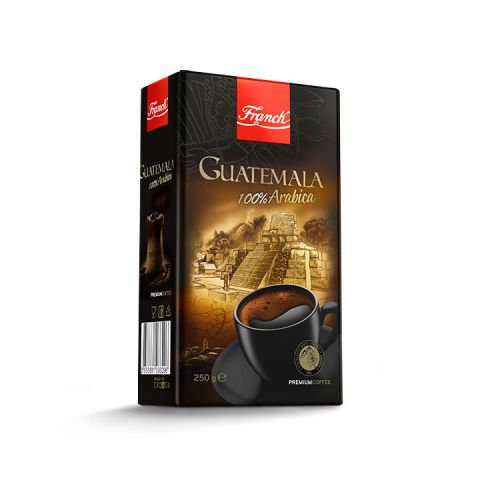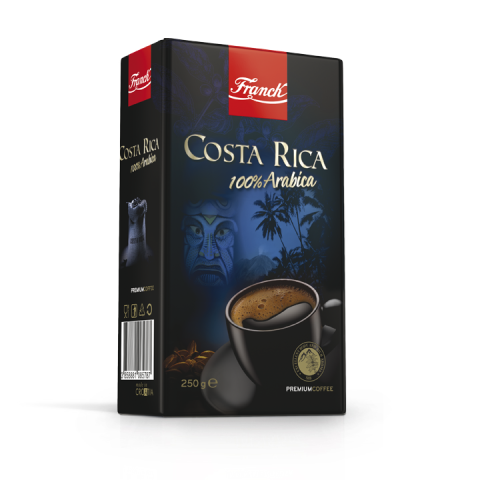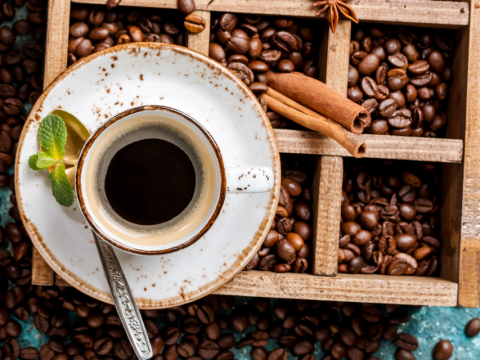Presenting Vesna Mihatov, Franck's master cupper, who explains the processes coffee passes through from the raw beans to the final product, and how Franck coffees are made
1. Can you introduce yourself? How long have you worked at Franck, what is your profession… What does it mean to be a coffee cupper and how did you come to this line of work?I came to Franck as an apprentice after graduating from the Faculty of Food Science and Biotechnology at the University of Zagreb, and I have been working with coffee for many years. My official job title is Manager for coffee research, development and procurement, which includes the development of new products and monitoring existing products, and for selecting and monitoring the quality of raw coffee beans. I am also a master cupper, and the name comes from the methods of evaluating coffee which includes, among other things “cupping”, or tasting coffee. In the cup, we can assess the aroma, flavour, expression of certain aromas, fullness of taste and how long it lasts. All these are important properties of coffee.
2. How do you purchase coffee? Where does it come from and what does it go through at Franck in order to become the coffee we have in our cup? What is the role of the master cupper in that process?
Coffee is grown in the tropical and subtropical belt that surrounds the equator, and some 70 countries in that belt produce coffee. Coffee comes to us from the country of production via several different European ports. After we approve a sample, the consignment is continually monitored; during storage, prior to loading on trucks in the harbour, and prior to receipt in the Franck raw coffee silos. Considering that we have a completely automated production system, all of these rigorous controls are necessary to ensure the uniform, unchanged quality of the coffee through its entire journey.
Coffee beans are purchased on the basis of a sample, and it is the master cuppers who are responsible for verifying its quality and confirming whether the sample is in line with the manufacturer's standards. Namely, if negative variations in flavour and aroma are noticed in the coffee cup, the sample and the coffee consignment is immediately rejected, as unacceptable for our production.
Of course, here we do not look only at the negative properties, but also the expression of all the positive characteristics, such as aroma, fullness of flavour and the like. Within these parameters, we conduct a selection, for example, for the premium segment of our coffees – these are exclusively premium coffee beans without any defects and with the maximum expression of positive characteristics that are approved for our coffees such as Superiore and Stretto espresso.
When the coffee consignment reaches us, we literally inspect every single bean to check for any possible defects in the beans. Coffee is an organic material, and it is only normal for a consignment to have some anomalies. There are various categories of defects, such as blackened beans, breakage of beans, etc. These are call bean defects, as they impact the flavour of the coffee in the cup. After this, physicochemical analysis is performed, which includes testing for moisture in the coffee bean sample, granulation and more. Then the coffee is roasted.
Roasting is an art in and of itself. In order to make premium coffee, you have to know how to properly roast the beans. You can have the best quality coffee beans, but if they are not roasted under optimal conditions, they will simply be destroyed, and you will not be able to get the most out of the beans. Every coffee variety is specific, and requires a specially adapted roasting process, in order to get out all the wonderful things the bean contains. This roasting process is very complex, and implies adapting and adjusting certain parameters, which will impact the final product in the cup.
After roasting, the sample is ground and prepared for the final, and most important phase of sample evaluation – “cupping”, or the organoleptic analysis, where the sensory capabilities and experience of the master cupper is critical.
Our senses are still irreplaceable, despite all the measurement instruments we have at our disposal. If I can sense that a certain coffee sample in the cup has negative components, and that it is lacking a full-bodied taste, a good aroma and all the wealth of flavours that I know it has to have, then that sample is rejected, even if the results of the previous physicochemical analysis of the sample met all our standards. This is the responsibility of my job and the task of my entire team, because based on a sample of just 300 to 500 grams, we need to make the decision to purchase a very large quantity of coffee, which at times can be in excess of 50 tonnes.
3. How can you tell in one cup of coffee if there is one “defective” bean that is not up to standards?
A person in this business must have very pronounced senses, and with that, experience is key, as are drinking many, many cups of coffee.
“On average, I taste up to 50 cups of coffee a day.”
Ultimately, it all depends on you and your predispositions, and in addition to being able to recognise all the nuances, it is also necessary to know how to describe them. It's about constant training. I have been working with coffee for seven years. In the beginning, it was difficult, especially because it was not so easy to recognise all the different nuances of coffee flavour without drinking it. Since this amount of coffee implies a large amount of caffeine, it is important to train your senses to not drink the coffee, but instead to spit it out.
As a cupper in Franck, I taste many different samples every day, from various 'origins', or countries of origin. Every coffee is named after its country of origin, such as Guatemala, Costa Rica, Mexico, Ethiopia, etc.
Each of these coffees has its own specificities that make it recognisable. For example, Guatemala coffee is known for its dark chocolate notes, while Ethiopia is a cup full of flowers. Every “origin” has its own specific flavours. In order to learn and remember all these specificities of each individual coffee and the differences between them, it is necessary to drink or taste many, many cups of coffee. It is important to stress that these are the naturally present aromas in the coffee bean.
4. How important is it to present new products, and to add new value to existing products? How do you create new coffees? What is important in that process?
In general, there are what we call “single origin” coffees on the market, like our premium ground Guatemala or Costa Rica coffees, which contain only coffee that originated from the country as listed in the name. However, most coffees are blends of coffees of varying origin, or from different countries. This is beauty of my work, as blending, or mixing these different coffees in order to create a completely new flavour, is truly an art.
“In order to illustrate this process, perhaps it is best compared to music and an orchestra. We will experience one instrument in one way, but with the inclusion of the entire orchestra, we obtain a completely different experience of the piece of music. It is the same with the flavours of coffee.”
Every coffee variety is specific, and they differ mutually by their characteristic flavour and aroma. In order to create a completely new flavour through blending, it is important to know each individual coffee and its specificities very well, so as to combine them into the perfect new flavour. The goal is not to create a blend of five or six coffees, if you will only taste the one dominant flavour. It is important to know how to select the right coffees that will complement one another perfectly in the blend, and their unique combination will give a completely new flavour that none of them can give individually. That is a great challenge and satisfaction.
5. We know that the Croats most love to drink ground coffee. Do you know when people drink the most coffee? How much they drink? Are we great coffee lovers?
Yes, we are great coffee lovers. Of course, that pleases me, as I work in the industry that produces coffee, and also because coffee connects us with something that creates a feeling of comfort. Like most Croats, I also love to take 15 minutes to sit and peace and enjoy a cup of coffee. In Croatia, we have developed a coffee culture, and I hope that this will transform into a ritual of enjoying coffee and recognising coffee.








